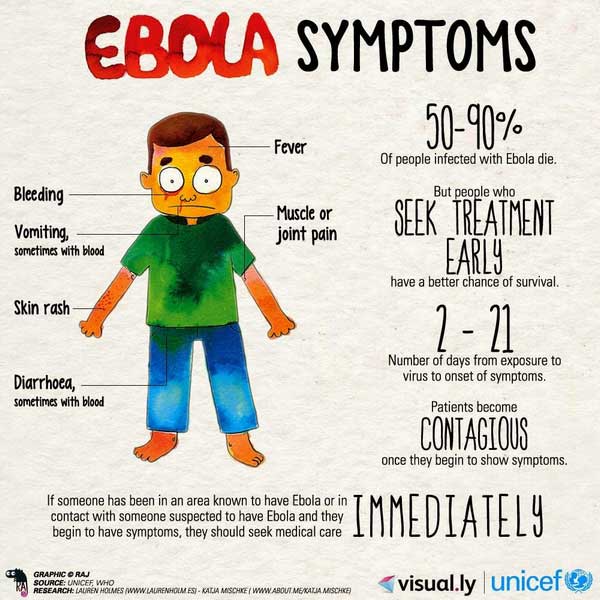 Electron micrograph of an Ebola virus virion
Electron micrograph of an Ebola virus virion
Symptoms typically start two days to three weeks after contracting the virus, with a fever, sore throat, muscle pains, and headaches. Typically nausea, vomiting, and diarrhea follow, along with decreased functioning of the liver and kidneys. At this point, some people begin to have bleeding problems.
The virus may be acquired upon contact with blood or bodily fluids of an infected animal (commonly monkeys or fruit bats). Spread through the air has not been documented in the natural environment. Fruit bats are believed to carry and spread the virus without being affected.
Once human infection occurs, the disease may spread between people as well. Male survivors may be able to transmit the disease via semen for nearly two months. In order to make the diagnosis, typically other diseases with similar symptoms such as malaria, cholera and other viral hemorrhagic fevers are first excluded. To confirm the diagnosis blood samples are tested for viral antibodies, viral RNA, or the virus itself.